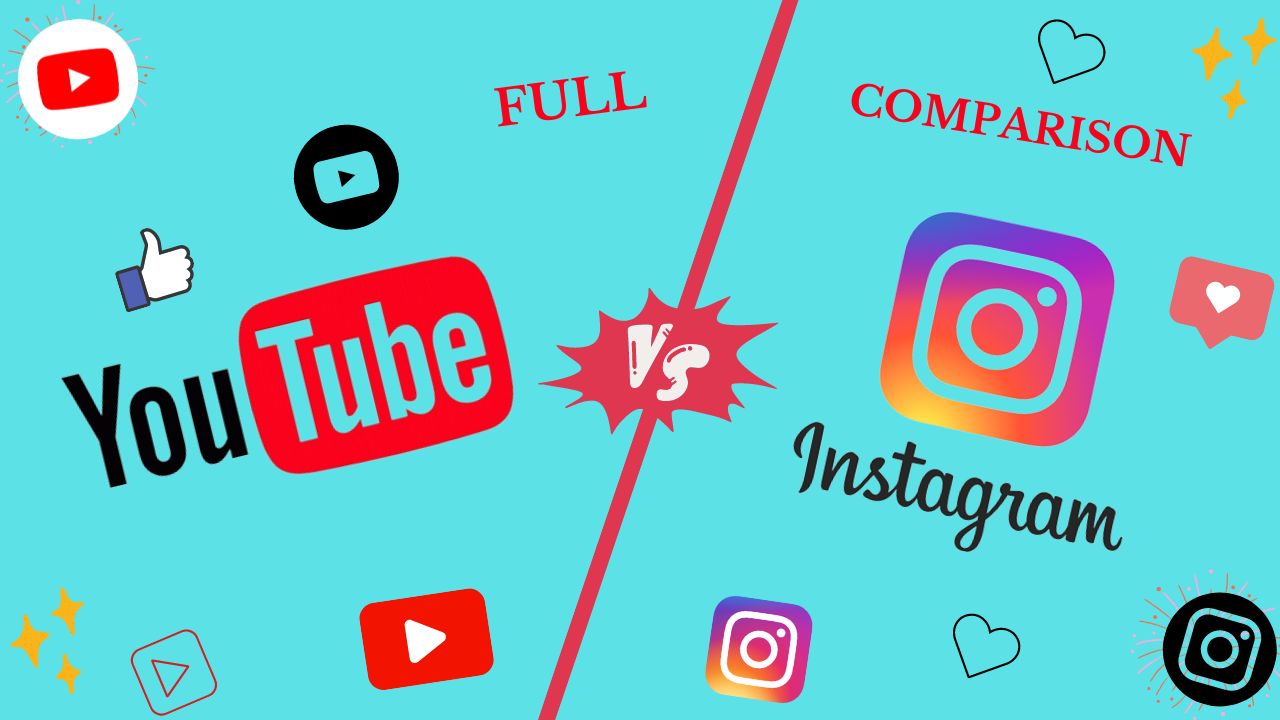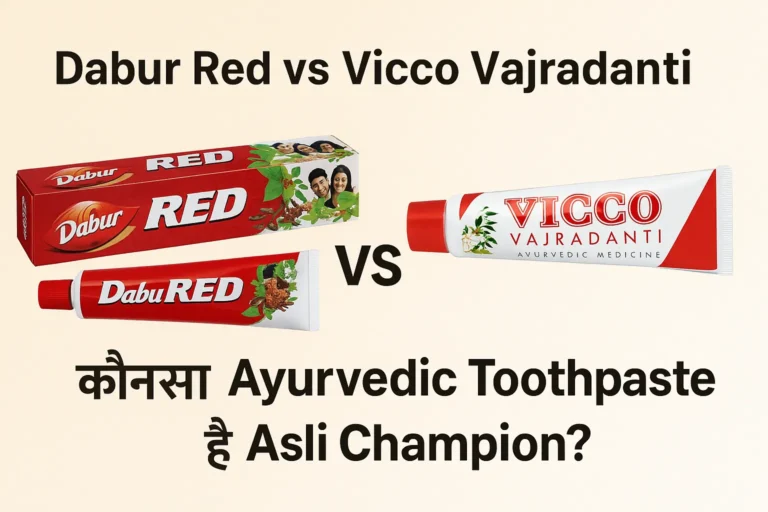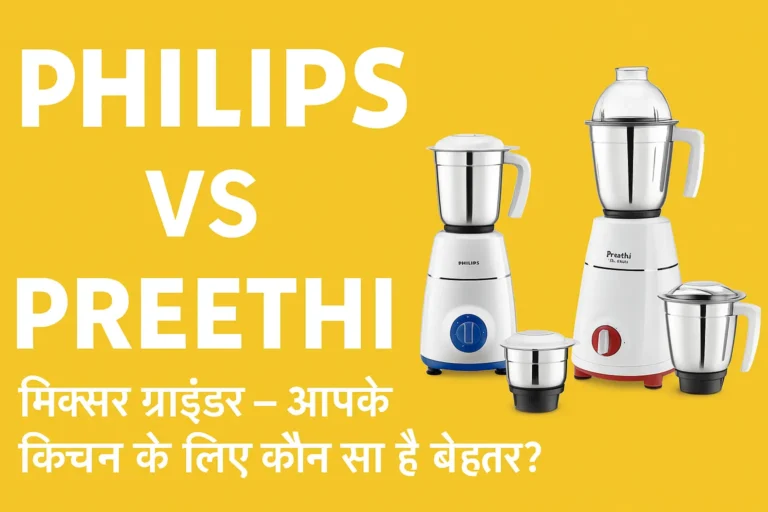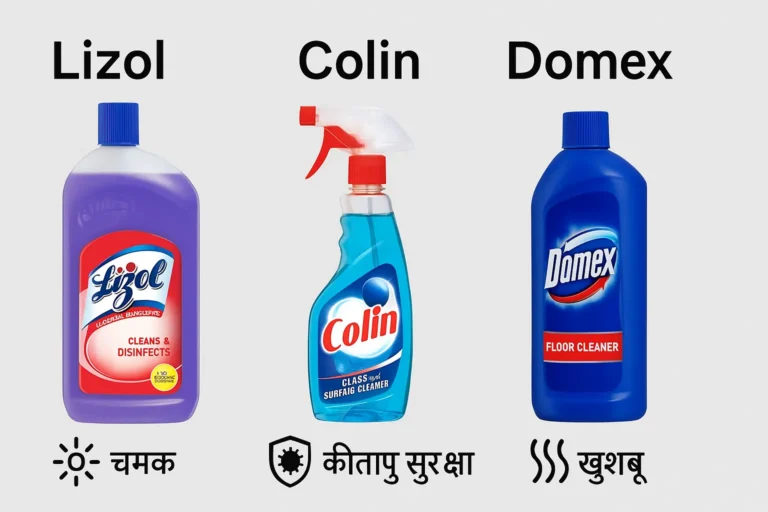In today’s digital age, where visual content reigns supreme, two major platforms have emerged as the frontrunners for content creators and marketers alike: YouTube and Instagram. With their vast user bases and unique features, both platforms offer incredible opportunities to connect with audiences and grow your brand. In this article, we’ll delve into the differences between YouTube and Instagram, helping you make an informed decision on which platform is best suited for your content strategy.
As content creators, you’re faced with the challenge of selecting the right platform to showcase your creativity and connect with your target audience. YouTube and Instagram are two giants in the social media landscape, each offering unique advantages and considerations.
Youtube Vs Instagram Table Info:
NAMES | Youtube | |
LAUNCHED | 14 FEB, 2005 | 6 OCT, 2010 |
OFFLINE/ONLINE | Online | Online |
FAME | Worldwide | Worldwide |
OWNER | Kevin Systrom, Mike Krieger | |
MARKET VALUE | US $180 Billion (approx) | US $102 Billion (approx) |
MONTHLY USERS | 2.7 billion (approx) | 2.35 billion (approx) |
A. User Base and Demographics
Understanding your audience is key, and both platforms attract different demographics. YouTube appeals to a wide range of age groups, particularly those seeking in-depth information and entertainment. Instagram, on the other hand, caters to a younger audience and is known for its visually appealing content.
1.YouTube: A Tapestry of Age Groups
- YouTube, as a comprehensive platform catering to a vast array of content types, has cultivated a tapestry of age groups within its user base. While it appeals prominently to the younger demographic, encompassing individuals aged 18 to 34, it also captures the attention of older age brackets seeking in-depth information, tutorials, and engaging entertainment. This wide age spectrum can be attributed to the platform’s versatility in hosting a plethora of content genres, from educational and informative videos to entertainment, music, and even news segments.
- Furthermore, YouTube serves as an archive of video content, inviting users of all ages to explore topics that cater to their interests and learning preferences. The platform’s algorithmic recommendations and personalized content curation contribute to a diverse user experience, where each viewer’s journey is uniquely shaped by their interactions and choices.
2.Instagram: The Visual Playground of the Younger Generation
- In contrast, Instagram has carved its niche primarily within the younger generation, predominantly those aged 18 to 24. This platform’s focus on visual storytelling, aesthetics, and the immediacy of visual content aligns seamlessly with the preferences of the digitally native youth. It has become the canvas for expression and creativity, attracting individuals with a penchant for sharing snapshots of their lives, fashion ensembles, artistic creations, and even ephemeral moments through Stories.
- The age skew towards the younger population has positioned Instagram as a hub for trends, fashion inspiration, lifestyle influencers, and the visual arts. The platform’s commitment to visually appealing content resonates deeply with this demographic, fostering a space where individuals can curate and project their identities through imagery.
3.The Intersection of Demographics and Content Strategy
- As a content creator, understanding the demographics of each platform empowers you to tailor your content strategy effectively. Your choice between YouTube and Instagram hinges on whether your target audience’s preferences align with the platform’s predominant user base. Delving into the nuances of these demographics can unveil insights that shape not only your content but also your engagement and growth strategies, ultimately guiding you towards the platform that resonates most with your intended audience.
B. Content Formats
In the ever-evolving landscape of digital content creation, the choice of platform goes hand in hand with the array of content formats that each platform supports. Both YouTube and Instagram have distinct content formats that cater to different styles of storytelling, engagement levels, and user behaviors.
1.Video Dominance on YouTube
- YouTube has established itself as a haven for video-centric content, earning its reputation as the virtual stage for creators to share their narratives, insights, and entertainment through the power of moving images. The platform’s foundation is built upon video uploads, where creators can delve into various content types, including educational tutorials, travel vlogs, humorous sketches, and even documentaries.

- With its focus on long-form video content, YouTube encourages creators to explore topics in-depth, fostering a space where comprehensive explanations and detailed demonstrations can thrive. Creators have the luxury of time, allowing them to unravel complex subjects and present multifaceted narratives to their audiences. This immersive video experience is further complemented by YouTube’s algorithmic recommendations, which introduce viewers to content that aligns with their interests, preferences, and viewing history.
2.The Versatility of Instagram
- Contrasting YouTube’s video-centric ethos, Instagram positions itself as a versatile platform accommodating an array of content formats, each catering to different aspects of visual storytelling. At its core, Instagram thrives on imagery, inviting creators to capture fleeting moments, aesthetic compositions, and snippets of their lives that resonate with their followers.
Instagram’s content formats include:
Photos
- The iconic photo posts on Instagram allow creators to capture and share high-quality images, giving audiences a glimpse into their world through a single frame. This format has birthed a culture of visually stunning feeds that entice users to scroll through curated galleries of creativity.
Short Videos
- Instagram’s short video format complements the fast-paced nature of the platform, encouraging creators to convey their message succinctly and engagingly. These videos are perfect for showcasing quick tutorials, humorous skits, or capturing brief moments of inspiration.
Stories
- Instagram Stories introduce an ephemeral and immediate storytelling dimension. Creators can utilize a combination of photos, short videos, stickers, and interactive elements to craft narratives that unfold over a 24-hour period. This format lends itself to behind-the-scenes glimpses, daily updates, and interactive Q&A sessions.
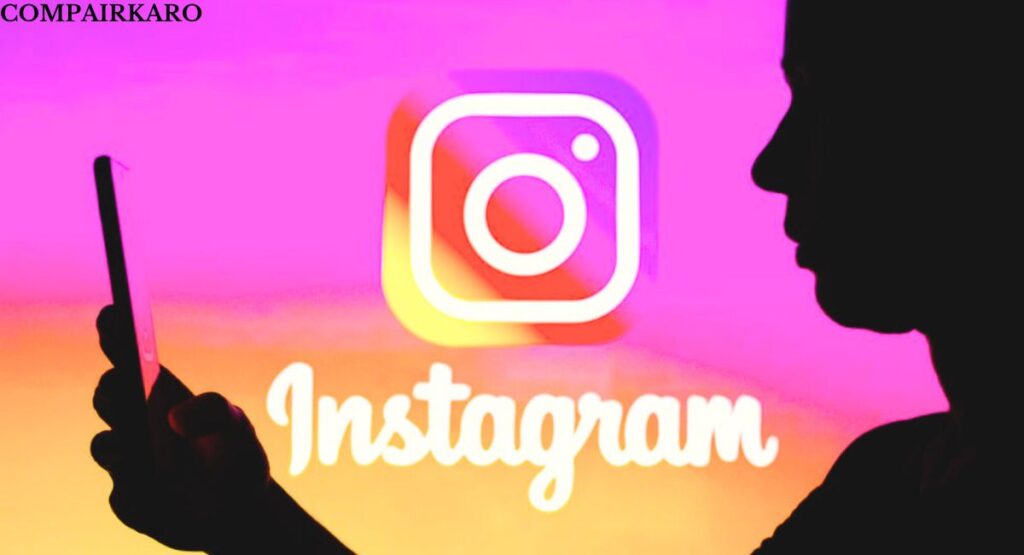
IGTV (Instagram TV)
- IGTV offers a dedicated space for long-form video content, allowing creators to share videos that exceed the traditional one-minute limit. This format encourages deeper dives into topics, reminiscent of YouTube’s long-form content approach.
- The multiplicity of content formats on Instagram enables creators to experiment with storytelling styles, catering to varying levels of user engagement and attention spans. Instagram’s strength lies in its adaptability, empowering creators to curate content that resonates with their followers in diverse ways.
3.Navigating the Choice
- When selecting a platform, your content format preferences play a pivotal role. If your content thrives on visual appeal and succinct storytelling, Instagram’s diversity of formats may align seamlessly with your vision. On the other hand, if your narrative demands comprehensive explanations and a deeper exploration of topics, YouTube’s video-centric environment offers the canvas you need to craft your content masterpiece. Understanding the nuances of these platforms’ content formats empowers creators to strategically align their storytelling with the platform that best amplifies their unique voice.
C. Discoverability and Searchability
In the digital realm, the ability for content to be discovered by users is a crucial factor for content creators and marketers. Both YouTube and Instagram offer distinct mechanisms for discoverability and searchability, influencing how audiences come across content on their respective platforms.
1.YouTube’s Search Engine Dominance
- YouTube stands as a titan in the realm of search engines, trailing closely behind its parent company, Google. This unique position has bestowed upon it an unparalleled advantage when it comes to discoverability. With over two billion logged-in monthly users, YouTube’s search bar has become the portal through which users embark on journeys of exploration.
- The platform’s search engine operates on a foundation of keywords, enabling users to unearth content by typing in specific phrases, questions, or topics of interest. YouTube’s algorithm then responds by presenting a curated list of videos that align with the search query. This search-centric approach allows creators to tailor their content to match frequently searched keywords, enhancing their chances of appearing in relevant search results.
- Moreover, YouTube’s algorithm extends beyond direct keyword matches. It analyzes user behavior, interaction patterns, and viewing histories to recommend content that aligns with individual preferences. This dual-layered approach – search-based and recommendation-based – elevates the discoverability of content, ensuring that both sought-after information and serendipitous discoveries are woven into the user experience.
2.Instagram’s Hashtags and Explore Pages
- On the other side of the spectrum, Instagram employs a different strategy for content discoverability. The platform relies heavily on hashtags and Explore pages to connect users with content that resonates with their interests. Hashtags serve as digital signposts, guiding users to specific content niches. By incorporating relevant hashtags into their posts, creators increase the visibility of their content to users who actively search for or follow those hashtags.
- The Explore page takes a curated approach, presenting users with a personalized selection of content based on their interactions and preferences. This immersive space introduces users to content outside of their immediate network, encouraging exploration beyond their follower list. Instagram’s algorithmic magic transforms the Explore page into a treasure trove of captivating visuals, sparking curiosity and enabling users to serendipitously stumble upon content that aligns with their tastes.
People also Read :- Nike Vs Adidas
3.Navigating the Path of Discovery
- As a content creator, understanding the dynamics of discoverability and searchability is paramount. If your content thrives on answering specific questions or providing solutions, YouTube’s search engine dominance offers a direct path to your target audience. By crafting titles, descriptions, and tags that align with popular search queries, you increase the likelihood of your content being discovered by users actively seeking information.
- For those who lean towards visual storytelling, Instagram’s hashtag strategy becomes a powerful ally. Employing relevant hashtags amplifies the reach of your content, ensuring it finds its way to users who share your interests. Furthermore, the Explore page serves as a stage for your content to shine before a broader audience, where the visual allure of your posts can captivate users and invite them into your content universe.
- In essence, the choice between YouTube and Instagram influences how your content is discovered. By aligning your content strategy with each platform’s approach to discoverability and searchability, you can craft a tailored pathway for audiences to uncover your creations, establishing a meaningful connection between your content and those who seek it.
D. Engagement and Interaction
In the realm of digital content creation, engagement and interaction form the heart and soul of building meaningful connections between creators and their audiences. Both YouTube and Instagram offer distinctive avenues for fostering these connections, enabling creators to cultivate dedicated communities and establish a rapport that extends beyond the screen.
1.YouTube’s Comment System: A Hub for Discussions
- At the core of YouTube’s engagement ecosystem lies its robust comment system. Each video serves as a digital town square, where viewers can share their thoughts, opinions, and reactions in real time. This platform’s architecture encourages dynamic discussions, allowing creators and viewers to interact on a personal level. Creators respond to comments, addressing questions, acknowledging insights, and forming a symbiotic relationship that elevates the content experience.
- These conversations not only deepen viewer engagement but also foster a sense of belonging. As the comment section transforms into a virtual gathering place, it gives rise to a community of enthusiasts, contributing to the sense of camaraderie that thrives around a creator’s content.
2.Instagram’s Interactive Features: A Tapestry of Engagement
- Instagram embraces a different dimension of engagement through its interactive features, which enrich the content experience in distinctive ways. The heart of this interaction lies in the double-tap of the “like” button, a simple gesture that signifies appreciation and resonance. Beyond this, Instagram’s Stories feature provides a canvas for creative engagement, where polls, questions, quizzes, and stickers empower creators to interact with their audience in real time.
- Moreover, Instagram’s direct messaging offers a private channel for one-on-one communication, bridging the gap between creator and viewer. This personal connection fosters a deeper bond, enabling creators to address queries, respond to feedback, and acknowledge their audience on an individual level.
3.The Power of Interactive Engagement
- Both platforms’ engagement strategies hold immense potential for creators. YouTube’s comment system encourages creators to become part of the conversation, transforming viewers into an engaged community. This interplay of voices fuels discussions, sparks debates, and offers creators the opportunity to glean insights directly from their audience.
- On Instagram, interactive features invite creators to embrace a more playful and spontaneous mode of engagement. Polls and questions allow creators to seek opinions, gather feedback, and tailor their content to audience preferences. This real-time interaction not only boosts engagement but also imparts a sense of inclusivity, where the audience feels integral to the content journey.
4.Nurturing Relationships
- As a content creator, recognizing the significance of engagement and interaction is paramount. By fostering a culture of open dialogue, responding to comments, and actively utilizing interactive features, creators can craft an experience that resonates with their audience on a personal level. Whether it’s through the ongoing conversations on YouTube or the interactive stories on Instagram, creators have the power to nurture relationships that transform passive viewers into devoted fans. Ultimately, the art of engagement lies in creating a space where every interaction contributes to the rich tapestry of the content experience, forming connections that endure long after the content is consumed.
E. Monetization Opportunities
In the digital age, content creation has evolved from a passion to a viable source of income for many creators. Both YouTube and Instagram present unique avenues for monetization, allowing content creators to transform their creativity into a sustainable career.
1.YouTube’s Ad Revenue Model
- YouTube’s monetization strategy is primarily built around ad revenue. As creators accumulate views and engagement on their videos, they become eligible to join the YouTube Partner Program. This program enables creators to earn a share of the revenue generated from ads displayed on their videos.

- Ad revenue is influenced by factors such as video views, watch time, and the audience’s geographic location. The more engaged your audience is and the longer they watch your videos, the higher the potential for ad revenue. Creators can further enhance their monetization by strategically placing ads within their videos, maximizing viewer retention while seamlessly integrating ads into the content.
- Additionally, YouTube offers premium subscription services like YouTube Premium and YouTube Music Premium, where creators earn a portion of the subscription fees based on their viewership. These services provide an alternative revenue stream for creators who offer high-quality content that resonates with a premium audience.
2.Instagram’s Influencer Marketing Landscape
- Instagram’s monetization approach revolves around influencer marketing. As content creators gather a substantial following, they become attractive partners for brands seeking to tap into their engaged audience. Influencers collaborate with brands to create sponsored content, promoting products or services to their followers.

- The influencer marketing landscape on Instagram is diverse, ranging from sponsored posts and stories to affiliate partnerships and product endorsements. Influencers negotiate compensation based on factors like their follower count, engagement rate, and niche relevance. While this monetization avenue requires a delicate balance between authentic content and promotional partnerships, it allows creators to harness their influence and creativity for financial gain.
3.Balancing Monetization with Authenticity
- Navigating monetization opportunities requires a delicate balance between financial gains and maintaining authenticity. On YouTube, creators must ensure that ad placements do not disrupt the viewer experience, striking a harmonious blend between content and advertising. For Instagram influencers, aligning with brands that resonate with their niche and values maintains the trust of their followers.
4.Choosing the Right Path
- The choice between YouTube and Instagram for monetization depends on your content type, audience engagement, and preferred revenue model. If your content thrives on long-form videos and you’re dedicated to building an extensive library, YouTube’s ad revenue offers a consistent income stream. On the other hand, if your visual content captures attention and resonates deeply with a specific audience, Instagram’s influencer marketing potential might provide a more tailored path to monetization.
- Ultimately, your monetization journey is a reflection of your content’s impact and your ability to form meaningful connections with your audience. By making informed decisions that resonate with your creative vision, you can transform your passion into a thriving digital enterprise.
F. Long-Form vs Short-Form Content
The landscape of digital content creation encompasses a rich spectrum of formats, each with its own unique strengths and appeal. Central to this diversity is the distinction between long-form and short-form content, each catering to different audience preferences and content consumption patterns. Both YouTube and Instagram provide platforms for creators to explore these formats, offering avenues for immersive storytelling and concise engagement.
1.YouTube’s Long-Form Embrace
- YouTube has solidified its reputation as a haven for long-form content, inviting creators to delve into topics with depth, detail, and nuance. Long-form videos, often ranging from several minutes to hours in duration, offer ample time for creators to unpack complex subjects, share comprehensive tutorials, conduct in-depth interviews, and craft narratives with meticulous storytelling.

- Long-form content thrives on YouTube’s searchability and discoverability, as viewers actively seek informative and immersive experiences. Creators who specialize in educational content, documentary-style storytelling, and extended discussions find a natural home on YouTube. The platform’s algorithm rewards watch time and engagement, making it conducive for creators who invest in providing value and insights that resonate with their audience.
2.Instagram’s Short-Form Allure
- In contrast, Instagram champions the art of brevity through its short-form content formats. This platform’s emphasis on visual storytelling and rapid content consumption aligns seamlessly with shorter attention spans and on-the-go content consumption habits. Short-form content, typically lasting a few seconds to a minute, caters to the need for quick, impactful engagement.
- Instagram’s short-form content includes Stories, short videos, and concise captions. Creators leverage these formats to share daily updates, behind-the-scenes glimpses, snippets of creativity, and bite-sized tutorials. The format’s immediacy fosters a sense of intimacy, connecting creators with their audience in fleeting yet memorable moments.
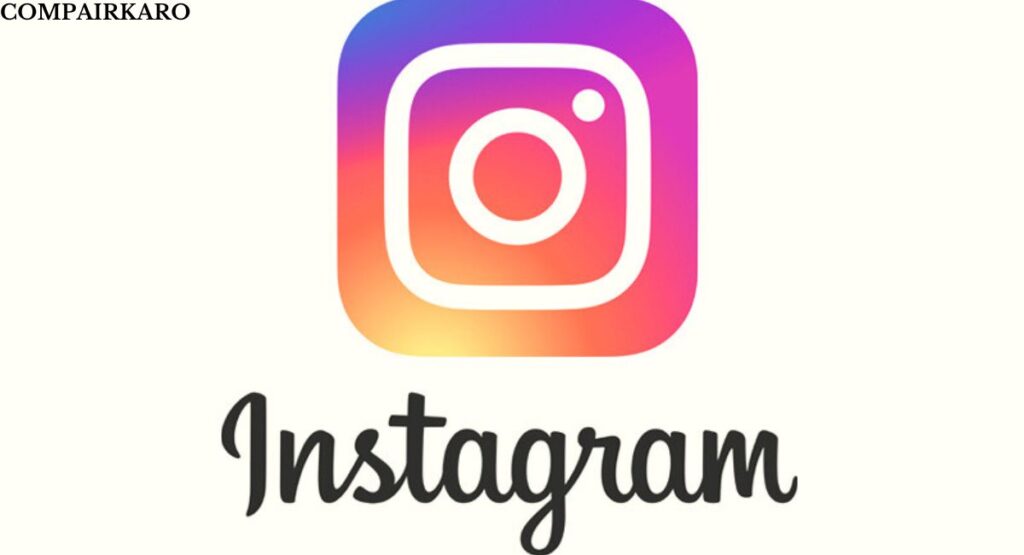
3.Balancing Depth and Accessibility
- The choice between long-form and short-form content hinges on the nature of your content, audience preferences, and the story you wish to convey. Long-form content excels in delivering in-depth insights, allowing creators to establish themselves as authorities within their niche. This format encourages sustained engagement and appeals to viewers seeking a comprehensive understanding of a subject.
- On the other hand, short-form content thrives in capturing attention swiftly, making it ideal for creators who can distill their message into concise, impactful bursts. Instagram’s Stories, in particular, capitalizes on the ephemeral nature of short-form content, offering creators the canvas to share authentic, unfiltered moments that humanize their brand.
4.Embracing Versatility
- In the dynamic world of content creation, the choice between long-form and short-form content isn’t exclusive. Many creators find success in embracing both formats across platforms, catering to different facets of their audience’s content consumption behavior. Whether you opt for long-form videos on YouTube to impart comprehensive knowledge or short, engaging snippets on Instagram to create an immediate connection, your content’s versatility lies in adapting to the storytelling canvas that best resonates with your audience’s needs and preferences.
G. Algorithm and Feed Display
In the digital landscape of content consumption, the way content is presented to users plays a pivotal role in shaping their experience and influencing their engagement patterns. Both YouTube and Instagram employ algorithms to curate and deliver content to users, each with its unique algorithmic approach and feed display mechanisms.
1.YouTube’s Algorithmic Recommendations
- At the heart of YouTube’s content discovery lies its sophisticated algorithm. This algorithm takes into account a multitude of factors to recommend content to users based on their viewing history, engagement patterns, and preferences. YouTube’s goal is to keep users engaged for longer durations, ensuring that they find content that resonates with their interests.
- The algorithm not only suggests content similar to what users have previously engaged with but also introduces them to new topics and creators that align with their tastes. Factors such as video watch time, user engagement (likes, comments, shares), and click-through rates contribute to the algorithm’s decision-making process.
- The YouTube algorithm has led to the rise of the “Up Next” feature, which automatically queues up related content once a video ends. This not only keeps users engaged but also encourages them to explore a variety of content within their chosen niche.
2.Instagram’s Content Curation
- Instagram’s algorithm is designed to enhance user engagement by presenting content that aligns with individual preferences and interests. The platform’s focus is on maximizing time spent on the app while delivering a personalized experience to each user.
- Instagram’s algorithm takes into account various engagement signals, including likes, comments, shares, and direct interactions with other users. The algorithm analyzes this data to prioritize content from accounts that users frequently engage with. This ensures that users see content from their closest connections and topics they’re interested in.
- The Explore page on Instagram complements the algorithm’s efforts by introducing users to new content based on their interactions and behaviors. This curated feed allows users to discover content beyond their immediate network, fostering serendipitous content encounters.
3.Crafting for Algorithmic Success
- For creators, understanding these algorithms is essential for optimizing content visibility. On YouTube, crafting engaging titles, descriptions, and video thumbnails can enhance the algorithm’s ability to match content with viewer interests. Consistency in uploading high-quality content also encourages algorithmic promotion.
- On Instagram, the quality of engagement matters. Encouraging meaningful interactions, responding to comments, and creating visually appealing content can bolster the algorithm’s favor. Utilizing hashtags effectively can amplify content reach, particularly when they align with the user’s interests and the content’s theme.
4.Striking the Balance
- Both platforms underscore the importance of striking a balance between algorithmic preferences and authentic content creation. While algorithms shape content distribution, creating content that genuinely resonates with your audience remains paramount. Navigating the intricacies of these algorithms while staying true to your creative vision ensures that your content reaches its intended audience and makes a lasting impact.
H. Building a Community
In the realm of digital content creation, fostering a sense of community transcends beyond mere engagement—it forms the cornerstone of meaningful relationships between creators and their audience. Both YouTube and Instagram offer distinctive avenues for creators to cultivate and nurture communities, each with its own dynamics and strategies.
1.YouTube’s Subscriber Model: Forging Loyalty
- Central to YouTube’s community-building ethos is its subscriber model. Subscribers represent a dedicated audience that actively opts to receive notifications about a creator’s new content. This dynamic fosters a loyal community of individuals who are invested in the creator’s journey and eager to engage with their content.

- As creators consistently produce content that resonates with their subscriber base, a sense of belonging and anticipation is nurtured. Subscribers become more than passive viewers—they become integral members of a community united by shared interests. This synergy contributes to higher engagement rates, as subscribers comment, like, and share content with a sense of camaraderie.
2.Instagram’s Follower Engagement: Nurturing Intimacy
- On Instagram, community-building thrives on the platform’s inherently intimate nature. Followers are not just spectators; they are participants in a visual narrative curated by the creator. The platform encourages creators to showcase both their creative journey and personal moments, fostering relatability and authenticity.
- Instagram Stories, in particular, offer a glimpse into a creator’s daily life, complete with behind-the-scenes moments and real-time updates. This interactive format enables creators to directly engage with their followers, posing questions, conducting polls, and encouraging conversations. The ephemeral nature of Stories creates a sense of immediacy, deepening the bond between creator and audience.

3.Nurturing Community Bonds
- Both platforms offer features that facilitate community engagement, such as YouTube’s community posts and Instagram’s comments and direct messaging. These tools enable creators to respond to feedback, address queries, and create a sense of dialogue that transcends the content itself. Such interactions humanize the creator, transforming them from distant figures to relatable personalities.
- Furthermore, fostering a community entails acknowledging and celebrating milestones together. Creators often engage in giveaways, Q&A sessions, and celebratory posts to involve their community in their journey’s triumphs. These gestures not only reinforce the sense of community but also demonstrate the creator’s gratitude for their audience’s support.
4.Crafting a Collaborative Space
- Building a community on YouTube and Instagram requires creators to approach their platforms as more than content dissemination tools. It requires cultivating an environment where engagement is not a one-sided transaction, but a collaborative interaction. Creators who authentically embrace their audience’s presence, respond to their input, and consistently deliver value are more likely to foster a vibrant, loyal community.
- Ultimately, the choice between platforms influences the nature of community-building. On YouTube, the subscriber model fosters a sense of loyalty, while Instagram’s intimate storytelling encourages intimacy. Regardless of the platform, the goal remains the same: to create a space where individuals gather not just for content, but for connection, dialogue, and shared experiences.
I. Live Streaming Capabilities
In the ever-evolving landscape of digital content creation, live streaming has emerged as a powerful tool for creators to engage with their audiences in real time. Both YouTube and Instagram offer live streaming capabilities, each with its own unique features and opportunities for creators to connect with their followers.
1.YouTube Live: In-Depth Engagement
- YouTube’s live streaming feature, known as YouTube Live, provides creators with a platform to broadcast content in real time. This feature enables creators to engage with their audience on a deeper level, fostering immediate interaction and feedback. Creators can use live streams for various purposes, including Q&A sessions, product launches, interviews, tutorials, and even live events.

- One of the distinctive advantages of YouTube Live is its ability to cater to longer-form content. Creators can host live streams that span several hours, allowing for in-depth discussions and comprehensive presentations. This duration enables creators to delve into complex topics, facilitate extended conversations, and provide a more immersive experience for viewers.
2.Instagram Live: Casual Real-Time Interaction
- Instagram’s live streaming feature, known as Instagram Live, offers a more casual and immediate approach to real-time engagement. Creators can go live with just a few taps, instantly connecting with their followers in an unscripted and authentic manner. This format is ideal for sharing spontaneous updates, behind-the-scenes moments, and direct interactions with the audience.
- Instagram Live sessions are ephemeral, disappearing once the stream ends. This dynamic encourages users to join the live stream in real time, creating a sense of urgency and exclusivity. Additionally, the live stream’s interactive nature allows creators to respond to comments, answer questions, and acknowledge their audience’s presence, fostering a sense of intimacy.
3.Harnessing the Power of Live Streaming
- Live streaming capabilities on both platforms offer creators a powerful means of engagement, but the choice between YouTube Live and Instagram Live depends on the desired content format and engagement approach.
- YouTube Live shines in scenarios where creators aim to provide substantial and in-depth content. It’s perfect for webinars, educational sessions, live tutorials, and events that require extended discussion and analysis. The platform’s ability to archive live streams ensures that the content remains accessible even after the live session concludes, contributing to discoverability and prolonged engagement.
- Instagram Live, on the other hand, excels in creating immediate connections. It’s suited for sharing unfiltered, real-time moments, fostering spontaneity, and showcasing the creator’s personality. The ephemeral nature of Instagram Live encourages followers to actively participate, ensuring that they don’t miss out on the live experience.
4.Tailoring the Live Experience
- The decision to utilize YouTube Live or Instagram Live hinges on your content objectives and engagement style. Both platforms offer creators the chance to connect with their audience in real time, bridging the gap between digital content and real-life interactions. By strategically employing live streaming capabilities, creators can craft engaging experiences that resonate with their audience’s preferences and expectations.
J. Content Longevity and Discoverability
In the dynamic landscape of digital content creation, the concept of content longevity and discoverability holds profound implications for creators seeking to maximize the impact of their work. Both YouTube and Instagram offer platforms with distinct approaches to content preservation and the ability for content to be discovered over time.
1.YouTube’s Evergreen Library
- YouTube is renowned for its role as a repository of evergreen content—videos that retain their relevance and value long after their initial upload. The platform’s search-oriented nature ensures that users can unearth content months or even years after it was created. This longevity grants creators the opportunity to establish a lasting presence and continue to attract viewers over time.
- Creators who produce educational content, tutorials, reviews, and in-depth analyses often benefit from YouTube’s content longevity. The platform’s algorithmic recommendations and search engine visibility contribute to the extended discoverability of content, making it possible for a video to gain views and engagement years after its release.
2.Instagram’s Ephemeral Charm
- Instagram, by design, embraces a more ephemeral approach to content, particularly with its Stories feature. Content shared through Stories disappears after 24 hours, catering to the desire for immediate and fleeting interactions. While this ephemeral nature limits the content’s lifespan, it also fosters a sense of urgency and exclusivity, encouraging users to engage promptly.

- While Instagram’s main feed content is relatively more permanent, it still operates within a context of rapidly changing trends and aesthetic preferences. The chronological algorithm ensures that older content gradually moves down users’ feeds, potentially making it less discoverable over time.
3.Balancing Longevity and Immediacy
- Creators must carefully consider the balance between content longevity and immediacy when choosing between YouTube and Instagram. YouTube’s searchability and recommendation algorithms offer a space for content to thrive over extended periods, making it an ideal choice for creators who prioritize evergreen content. This platform allows creators to establish themselves as authoritative sources within their niche, catering to viewers seeking informative content.
- On the other hand, Instagram’s ephemeral nature appeals to creators who thrive on capturing the moment, sharing real-time updates, and fostering an immediate connection with their audience. While Instagram’s content may have a shorter lifespan, it leverages the power of instantaneous engagement and authentic storytelling.
4.Navigating the Time Spectrum
- Ultimately, the decision between YouTube and Instagram depends on the intended lifespan of your content and the way you wish to engage with your audience. While YouTube offers a platform for content that withstands the test of time, Instagram excels in providing a platform for instantaneous connections and trends. By strategically aligning your content strategy with the lifespan you desire for your content, you can leverage the strengths of each platform to maximize the impact of your digital creations.
K. Privacy and Security
In the digital age, considerations related to privacy and security have become paramount for both content creators and their audiences. As creators share their work and engage with their followers, understanding the privacy and security features of platforms like YouTube and Instagram is crucial to ensure a safe and protected online presence.
1.YouTube’s Privacy Measures
- YouTube places a strong emphasis on user privacy through a range of features and settings. Creators have control over the visibility of their videos, allowing them to designate content as public, private, or unlisted. Public videos are accessible to all users, private videos are limited to specific individuals, and unlisted videos are shareable only through direct links.
- Furthermore, YouTube provides tools to moderate comments on videos. Creators can filter out potentially harmful or inappropriate comments, fostering a safer environment for both creators and viewers. The platform’s policies also address issues like copyright infringement, ensuring that creators’ original content remains protected.
2.Instagram’s Privacy Considerations
- Instagram, too, offers privacy features that empower creators to manage their online presence effectively. Creators can set their account to private, limiting content visibility to approved followers. This approach is particularly valuable for creators who prioritize sharing content with a select, trusted audience.

- Additionally, Instagram allows creators to control who can comment on their posts and who can send them direct messages. These features help mitigate unwanted interactions and foster a more secure and enjoyable experience for both creators and followers.
3.Protecting Personal Information
- Both platforms emphasize the importance of safeguarding personal information. Creators are encouraged to refrain from sharing sensitive information in their content, such as home addresses or contact details. YouTube and Instagram recommend using official business accounts or professional email addresses to manage inquiries and collaborations, maintaining a level of separation between personal and professional spheres.
- Creators should also be mindful of phishing attempts and scams that may target their followers. Educating both themselves and their audience about potential online threats can help maintain a secure and trustworthy online presence.
4.Prioritizing Safety
- When choosing between YouTube and Instagram, considering privacy and security implications is crucial. Creators must assess which platform’s features align with their content strategy and audience engagement style while prioritizing safety and security. By understanding and utilizing the privacy settings and tools provided by each platform, creators can cultivate a digital environment that fosters creativity, engagement, and trust while safeguarding their personal information and that of their followers.
L. Conclusion
- In the battle of YouTube vs Instagram, there’s no one-size-fits-all answer. Your content, audience, and goals will dictate your choice. YouTube’s searchability and monetization potential make it ideal for educational and long-form content, while Instagram’s visual appeal and engagement features are perfect for those seeking quick interactions and brand collaborations.
Which platform is better for vloggers?
It depends on your style. YouTube suits longer vlogs, while Instagram is great for bite-sized updates.
Can I make money on both platforms?
Absolutely. YouTube offers ad revenue, while Instagram enables influencer partnerships.
Is Instagram’s Stories feature similar to YouTube’s Shorts?
Yes, both offer short-form vertical videos, but Instagram Stories are more temporary.
Can I use both platforms simultaneously?
Of course! Many creators cross-promote content on both platforms to reach a wider audience.
Are there age restrictions for creating accounts?
Yes, both platforms have minimum age requirements: 13 for Instagram and 18 for YouTube.

